10.12. SDWAN¶
You can find the SDWAN Settings at Interfaces → Assign → SDWAN.
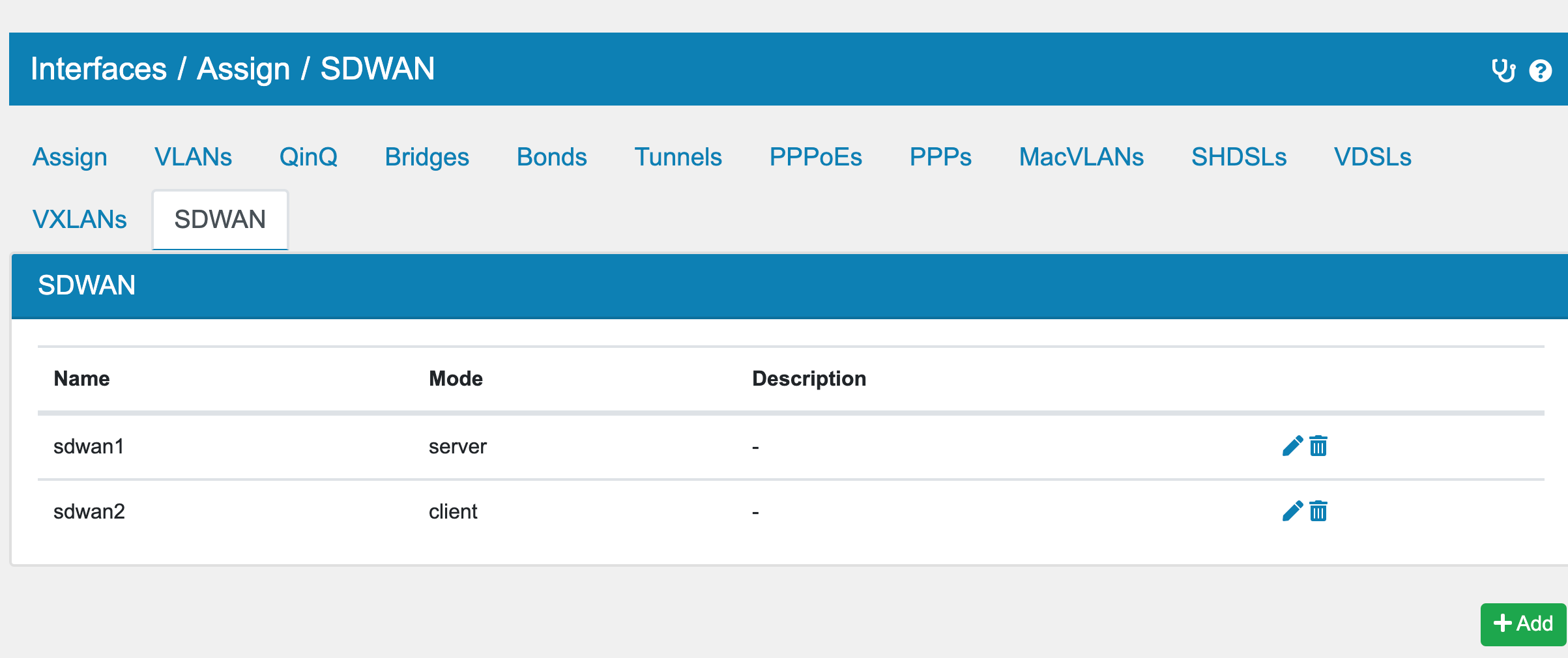
SDWAN can be used to create a Layer 2 Network over multiple physical locations with multiple WAN connections. SDWAN in VT AIR is a Point to Point protocol. This means each SDWAN instance can connect exactly to one location. For multiple locations you need to create multiple instances on different ports.
One side has to be the Server and the other acts as the Client.
For authentication a generated key is used on both ends. Encryption between Server and Client is performed with AEGIS-256 or ChaCha20-Poly1305.
10.12.1. SDWAN Server¶
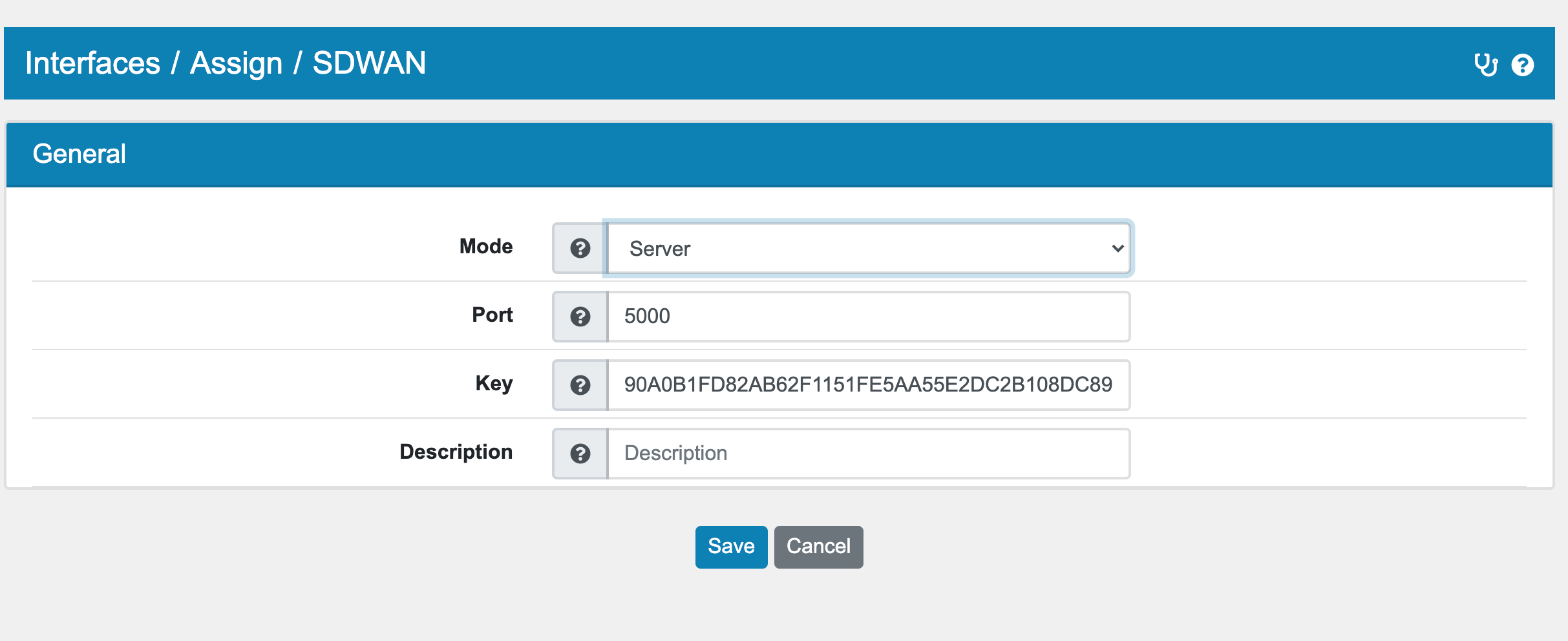
Mode pick Server
Port needs to be the unique listening port. A firewall rule for the port is required with the port, protocol UDP and one or more WAN addresses the SDWAN Server should be reachable on.
Key for authentication. When left empty a new one is generated. Please make sure both sides have the same key.
Description for custom Description
The Assign to new Interface option will automatically create a new Interface (INTx) based on your new SDWAN if activated. Alternatively you can manually add your Tunnel to a specific Interface as described in Assign Interfaces.
10.12.1.1. Server Interface Settings¶
In order to use the SDWAN Server, you have to assign it to an interface first.
The Interface SDWAN configuration can be found in the left sidebar under INTx (or the name that you manually assigned to the SDWAN Interface).
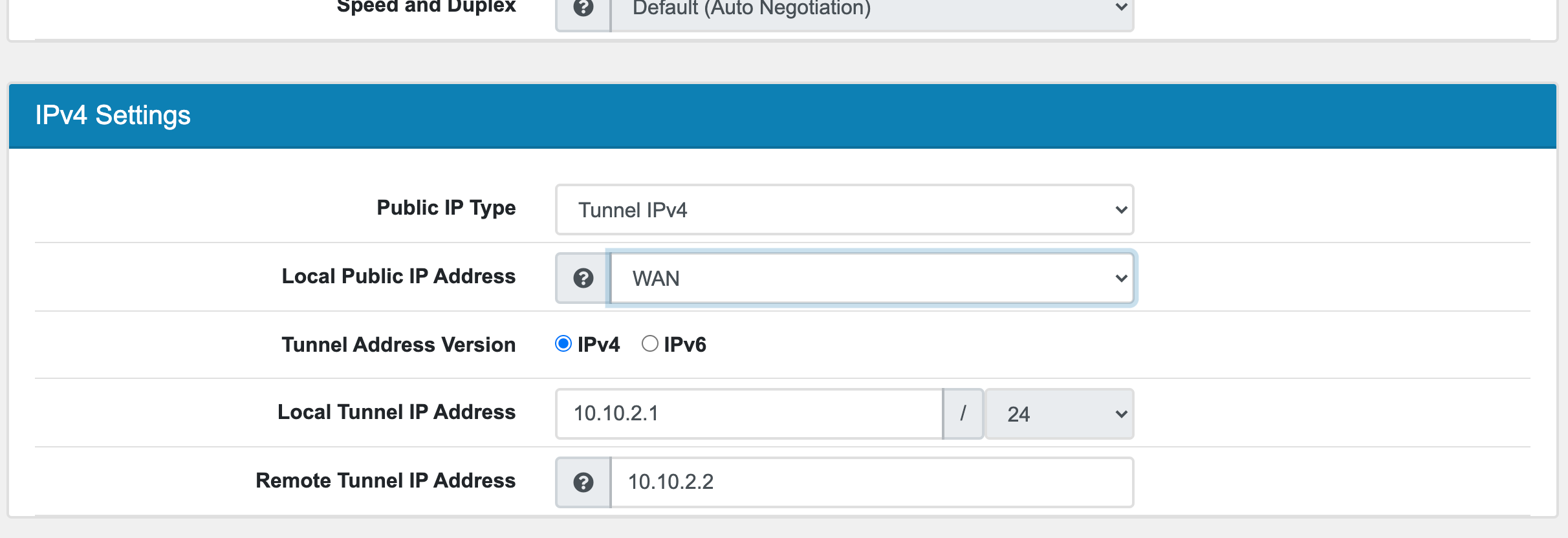
A SDWAN always has an Public IP Type and an Interface IP Type. The Public IP Type is IPv4 or IPv6 and it sets the servers IP listening for connections.
Local Public IP Address is the server IP Address and it is an Interface or Virtual IP Address of VT AIR or when All is selected any IP.
Tunnel Address Version is depending on the SDWAN Type IPv4 or IPv6 and represents the Interface IP Type
Local Tunnel IP Address is the local SDWAN IP Address and the corresponding subnet mask.
Remote Tunnel IP Address is the remote SDWAN IP Address and the corresponding subnet mask.
The Remote Tunnel IP Address will be used to route traffic from the server to the client.
Note
Make sure that the Local and Remote Tunnel IP match on both ends.
10.12.2. SDWAN Client¶
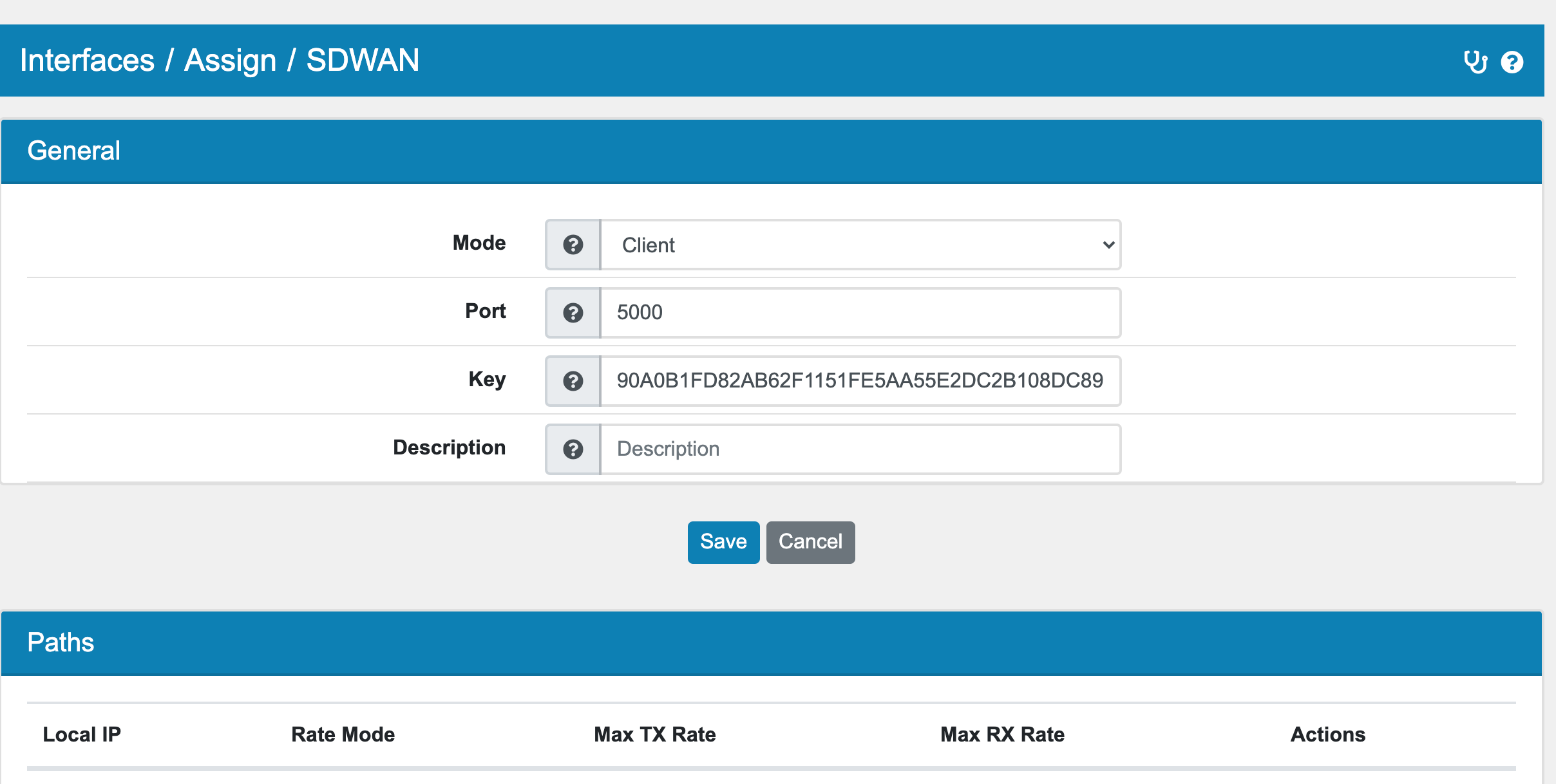
Mode pick Client
Port needs to be the unique port for the client to bind to.
Key for authentication. When left empty a new one is generated. Please make sure both sides have the same key.
Description for custom Description
The Assign to new Interface option will automatically create a new Interface (INTx) based on your new Tunnel if activated. Alternatively you can manually add your Tunnel to a specific Interface as described in Assign Interfaces.
Paths are ways to the Server. You can have multiple Paths that can be used together or as backup. When used together the SDWAN Daemon will balance out the traffic depending on the speed and quality of the connection.
10.12.2.1. SDWAN Paths¶
One or more paths to the SDWAN Server are required so a connection can be established.

Local Public IP Address for an external IP. Only IPs from interfaces that have a Gateway set on the Interface can be used.
Description for custom Description
Rate can be auto or fixed or backup. auto will monitor the connection and change the speed on demand. fixed will keep it on a fixed speed. backup will make this a backup connection that is only used when the primary connection is down.
Max TX Rate for the maximum TX speed (Upload) to be used
Max RX Rate for the maximum RX speed (Download) to be used
10.12.2.2. Client Interface Settings¶
In order to use the SDWAN Client, you have to assign it to an interface first.
The Interface SDWAN configuration can be found in the left sidebar under INTx (or the name that you manually assigned to the SDWAN Interface).
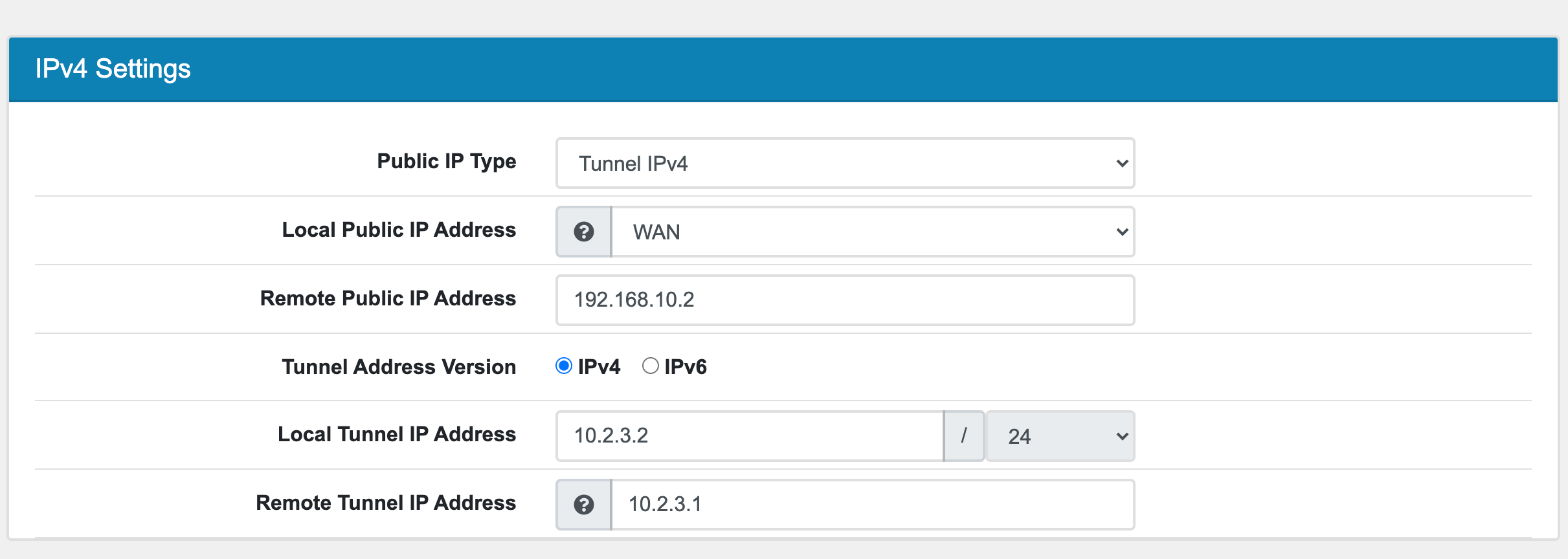
A SDWAN always has an Public IP Type and an Interface IP Type. The Public IP Type is IPv4 or IPv6 and it sets the servers IP listening for connections.
Local Public IP Address is the server IP Address and it is an Interface or Virtual IP Address of VT AIR or when All is selected any IP.
Remote Public IP Address is the remote SDWAN Server public IP Address that the client connects to.
Tunnel Address Version is depending on the SDWAN Type IPv4 or IPv6 and represents the Interface IP Type
Local Tunnel IP Address is the local SDWAN IP Address and the corresponding subnet mask.
Remote Tunnel IP Address is the remote SDWAN IP Address and the corresponding subnet mask.
The Remote Tunnel IP Address will be used to route traffic from the client to the server.
Note
Make sure that the Local and Remote Tunnel IP match on both ends.